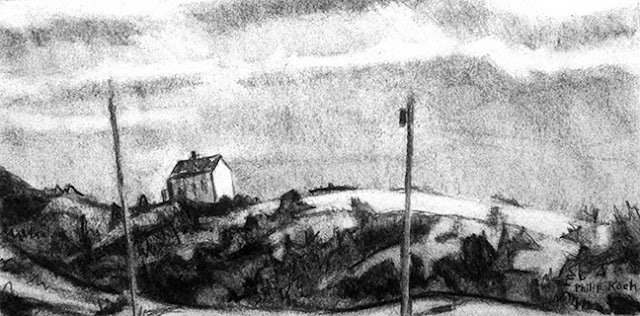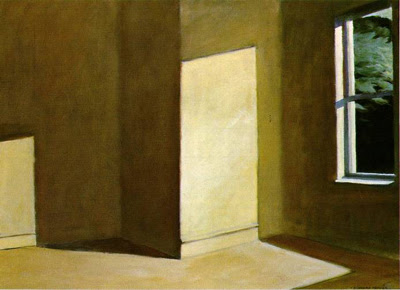Why I Paint the Way I Do
We find ourselves when we look at art. A painting is always a self portrait, both of the artist and of the viewer. Here are two paintings. One by the famous Pop artist Andy Warhol and the other by myself. I'll give you a minute to see if you can figure out which is which.
Way back in the late 1960's I was sitting in a modern art history class at Oberlin College and the top image (if you guessed that was the Warhol you're sharp as a tack) was being discussed by the lecturer, a then famous art historian who taught at the school. She made the expected commentary about how Warhol was holding up the mirror to show us our mass production corporate culture. And I got her point- honestly I think it was hard to miss.
But then she said something further that really got my attention. She claimed that in addition to his critique of our society Warhol was creating a visually stunning painting with subtle shifts in the colors between each soup can. This added an extra stratum of visual meaning.
No matter how hard I looked I couldn't see even a whisker's difference between one soup can and its neighbor. There was a lot of hoopla surrounding Warhol that had more to do with his celebrity and the goofy blonde "fright wig" he would wear in public than his stature as a painter. I decided Pop Art and I were going to have to part ways.
The other painting above is my Deep Forest Pool, oil on panel, 32 x 40", 2011. Like the Warhol it is a shallow space and many of its trees line up in rows like Andy's soup cans. Obviously it draws inspiration from some artists from our past- in fact it is a subject that could easily have attracted a Winslow Homer, the excellent late 19th century American painter.
There is a mystery and a poetry to the deep woods. Remember our very distant ancestors were arboreal creatures. I'm convinced deep within us traces of that early identity echo on. We may have built cities, but leaves and branches still live on in our bones. As long as there are forests there is going to be a need for contemporary artists to interpret them for us. An artist working in 2011 of necessity sees a little differently than an artist working in the 1930's or back in the preceeding century.
I want my images of the forest to be something deep and resonant with feeling, so I worked literally for months on this painting making subtle adjustments in its colors. To take just one example, the colored greys in the various tree trunks. Two fallen trunks submerge in ink dark water. They each have toned down highlights as I want your eye to move past them and be caught by the three standing birches on the far shore. These are the lead "dancers", spotlighted as they lean gently to the right.
Unlike the soup cans, I make them individuals. Each gestures a little differently as your eye travels up their length to the top of the painting. Then the supporting cast of smaller trunks make an opposing movement, gesturing up to the left. They have their highlights held back to keep from stealing the show from the leading dancers.




